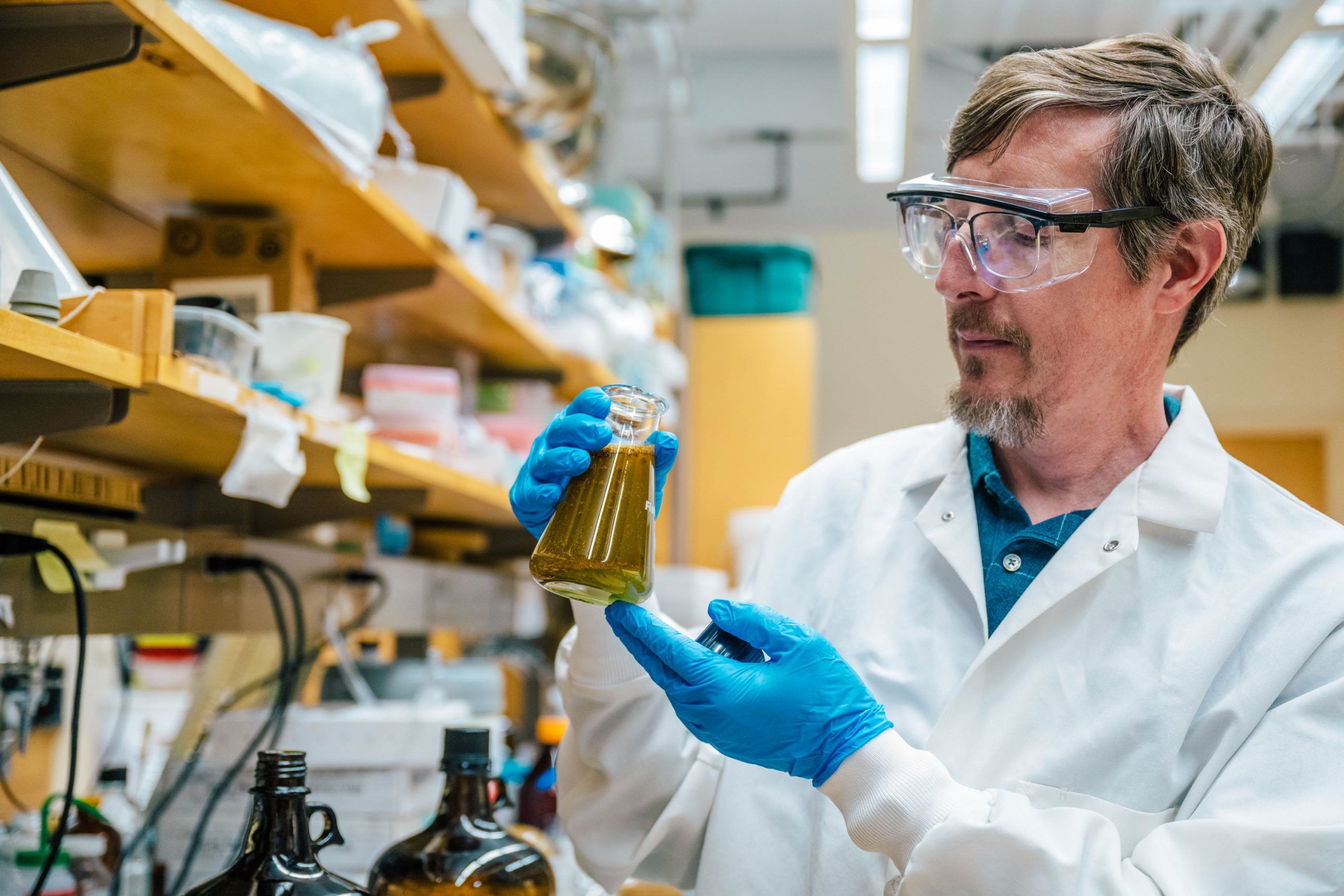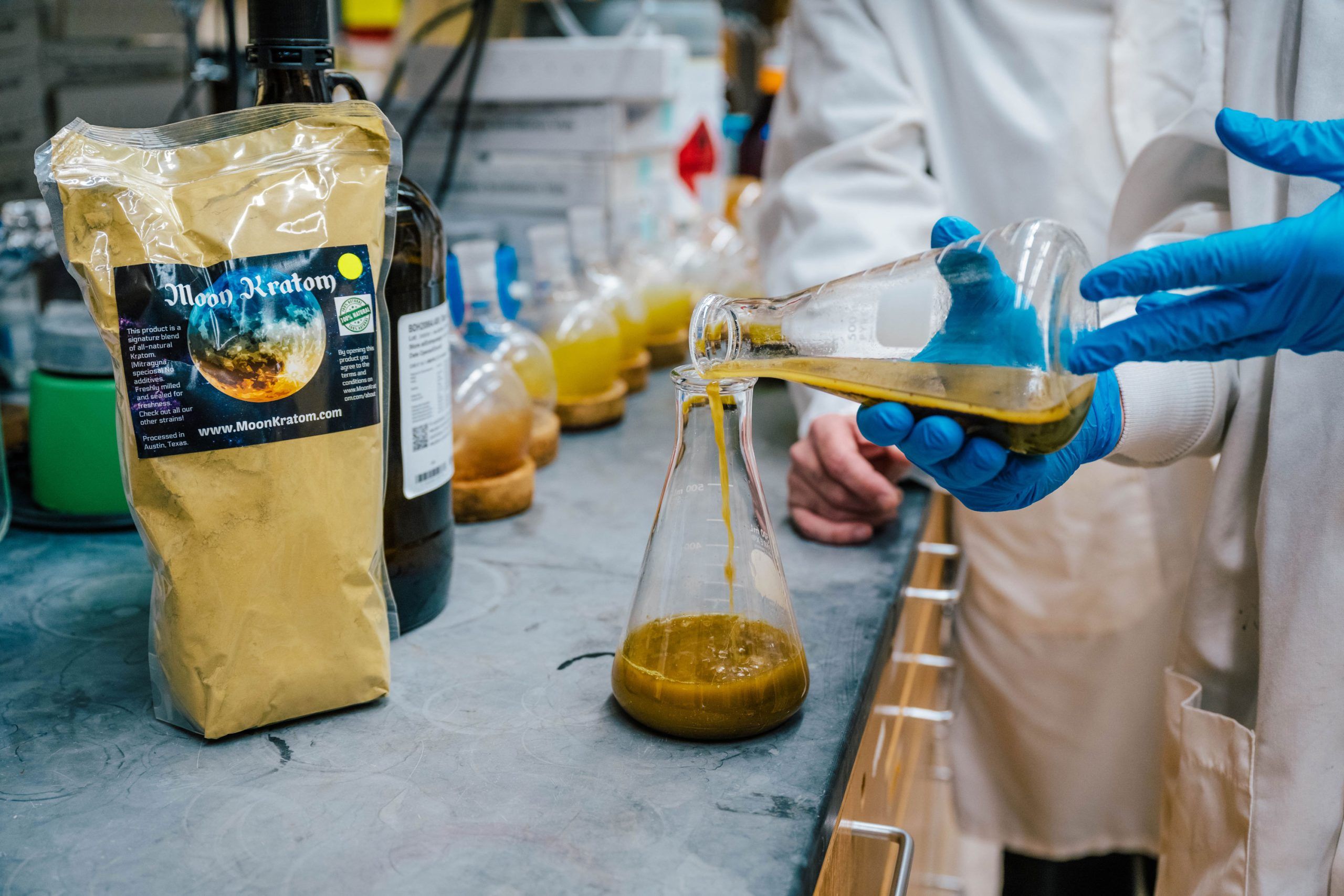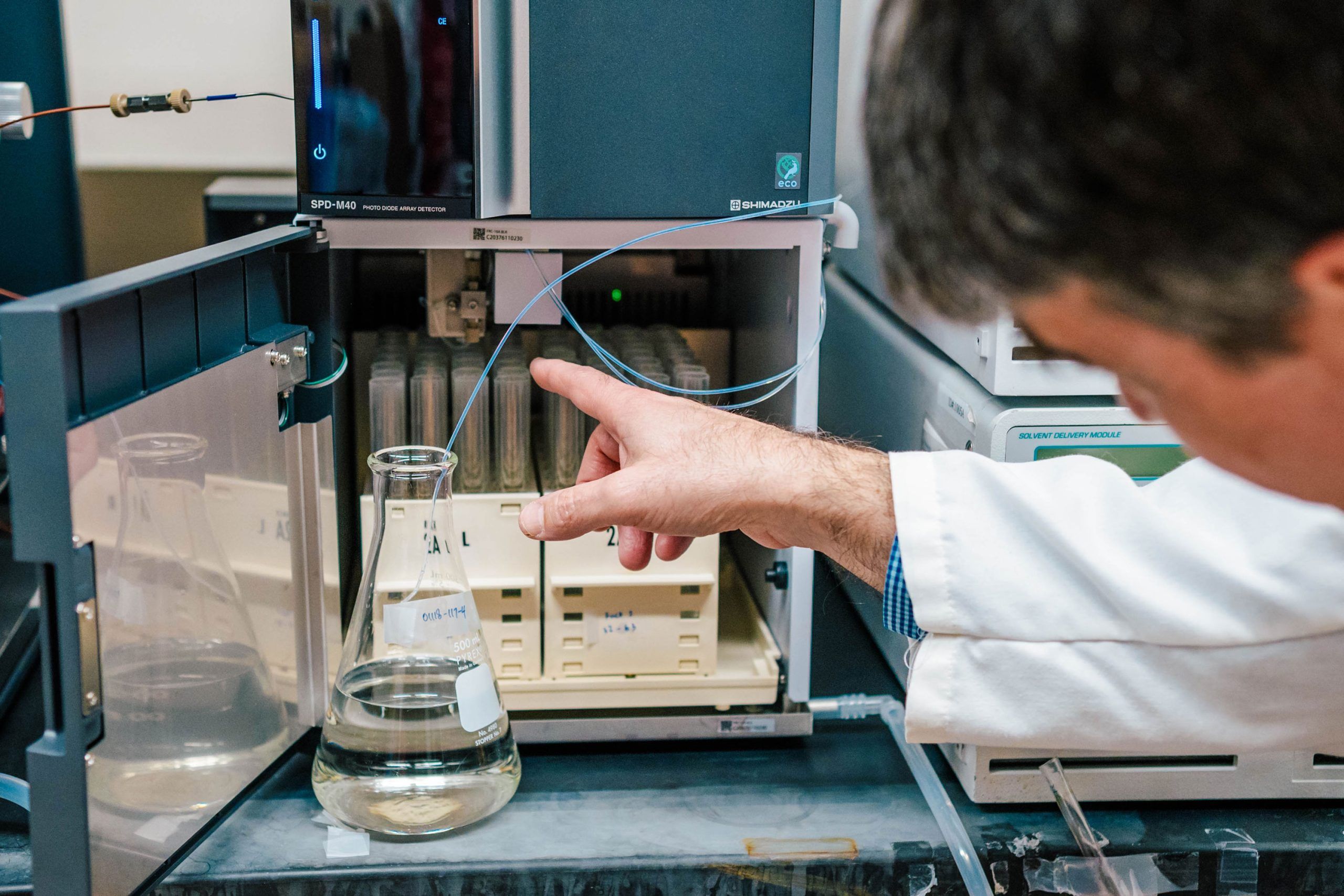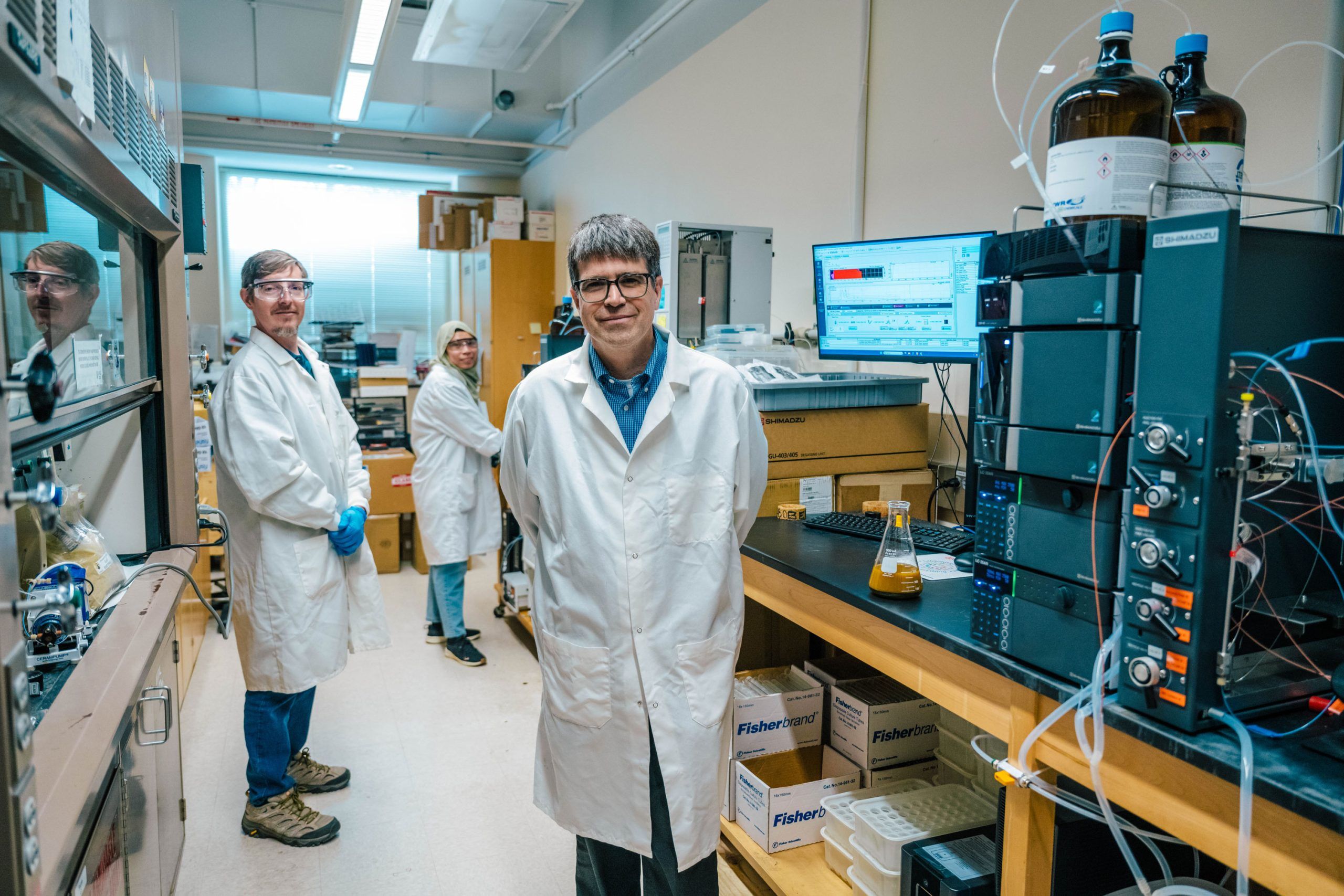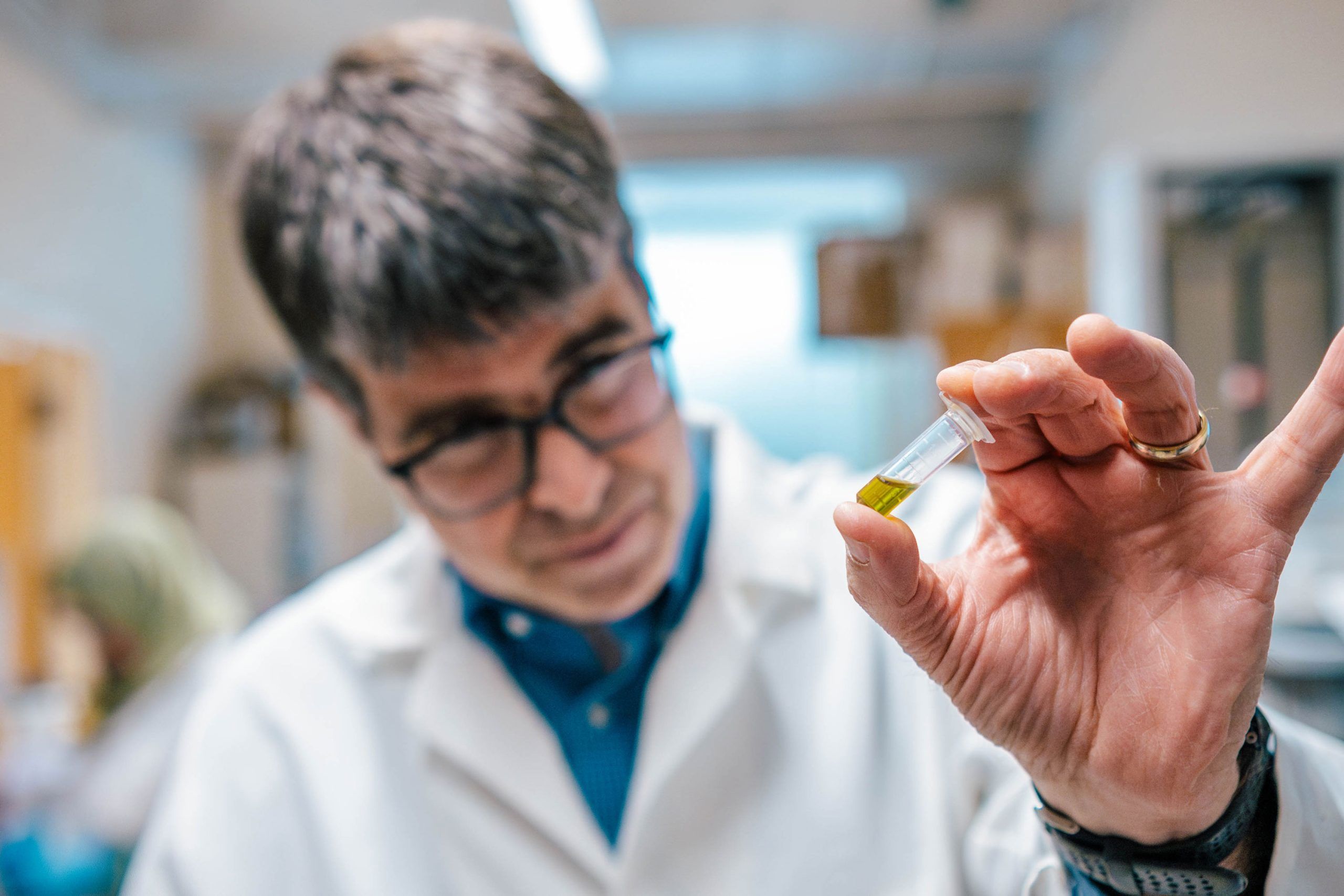Herbal Supplements Under the Scope
Herbal Supplements Under the Scope
From supplement stores to gas stations, many herbal products are sold with the implication they can improve your health or address illness. There’s often little scientific backing for those claims.
Before scientists can assess whether an herbal remedy is effective, they must know what’s actually in it. That’s where Dr. Nick Oberlies and Dr. Nadja Cech, UNCG natural products chemistry professors, come in.
“Herbal remedies are a mixture. Sometimes they’re a mixture of five or six compounds, sometimes they’re a mixture of dozens of compounds,” Oberlies says. “If you’re going to study Herb X, I want to make sure that you actually know what the herb is.”
For the last decade, Oberlies and Cech have analyzed popular herbal products, including green tea, milk thistle, cinnamon, CBD, and kratom.
Kratom, for example, has been used in Southeast Asia, where the tree grows natively, since at least the 19th century to treat pain and other ailments. It is sold in many states and is legal and unregulated in North Carolina, although the FDA says kratom can’t be marketed as a drug, supplement, or food additive.
Dr. Mary Paine, a pharmaceutics professor at Washington State University, worked with Oberlies and Cech to prepare for the only U.S. clinical trial of kratom.
One finding of that study was that kratom might increase the overdose risk among opioid users.
Nature’s Tiny Chemists
Dr. Nick Oberlies’ lab searches for cancer-fighting compounds in fungi, delves into the chemistry of medicinal herbs, and explores how fungal chemistry could make electricity cheaper and safer.
Interdisciplinary, collaborative research – like the long and productive partnership between Oberlies, Cech, and other scientists investigating herbal remedies – is the norm for Oberlies.
His current funded projects involve industry, government, and university collaborations with the likes of Attagene, Inc., the USDA, Vanderbilt University, Boston University, and The Ohio State University, to name only a few.
“I always tell new students that want to join my group that we are extremely collaborative,” he says. “Everyone has a role to play. The role may grow over time, but no one person’s role is greater or lesser than anyone else’s.”
